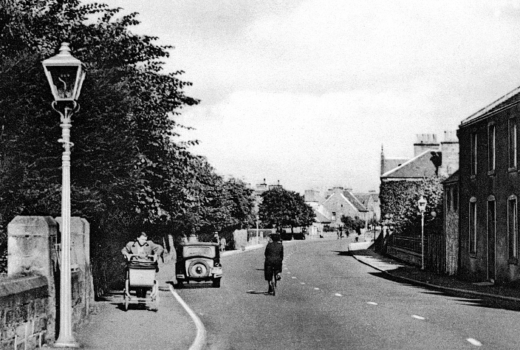Parish Representative & Parish Editor:
Iain Macaskill MBE
Introduction
Situated between the wooded estates of Gosford and Luffness at the head of the great tidal bay, Aberlady remains one of the most attractive of East Lothian villages. The parish boundary runs from Gosford Bay eastward along the shoreline to the Peffer Burn, thence to Luffness Mill, south towards Mungoswells, west to Ballencrieff, Lochhill and Spittal, and northwest along the line of the Redhouse Burn. Aberlady parish covers some 2029 ha (5014 acres).
The restoration of normality to village life in the aftermath of the second world war came about gradually. In 1945 the canteen in the drill hall, which was run by the Women’s Voluntary Service (WVS), was closed. The villagers celebrated Victory in Europe (VE) day and Victory over Japan (VJ) day in 1946, and the names of the four local men who had lost their lives were duly added to the War Memorial. In the 1940s, land girls had been stationed in the village at ‘Selee’ (now known as Greyfriars), but this ceased after the end of the war. In 1947 children at the primary school enjoyed their first summer trip since 1939. German POWs from the military camp at Gosford removed concrete anti-tank blocks from Kilspindie, and the camp was still occupied by the army when the Haddington fire brigade attended a serious fire there in 1951. It was to be the mid-1960s, however, before the ten postwar prefabricated houses, the ‘prefabs’, at Kirk Road were dismantled and the air-raid shelters removed from the school.
For about 20 years after the war the physical appearance of Aberlady did not change much, with the attractive Main Street displaying a variety of architectural styles and building materials, and many single and two-storey houses dating from the 18th and 19tthcenturies. Distinctive dwellings include Red Row, a series of early 19th century cottages with Gothic windows and doors, and Gable Cottage dated 1684. A notable feature – and a reminder of Aberlady’s former importance as the port of Haddington and burgh of barony – is the 18th century stepped Mercat Cross.
Aberlady was fortunate in that its existing charm protected it from unchecked (indiscriminate) development; what was built from the 1960s was carefully monitored, and efforts were made to keep the village style intact. From about the 1990s, this monitoring appeared to be less in evidence.
